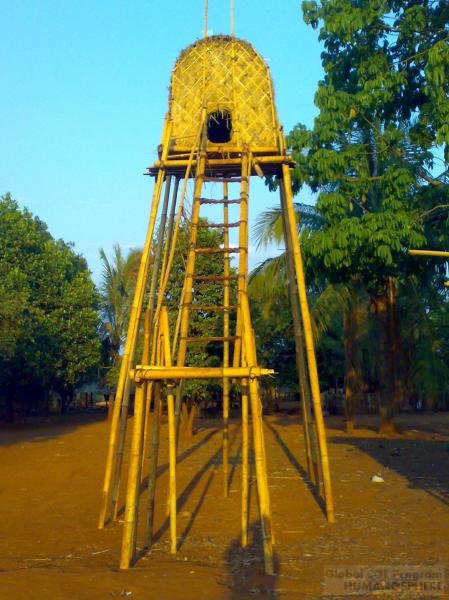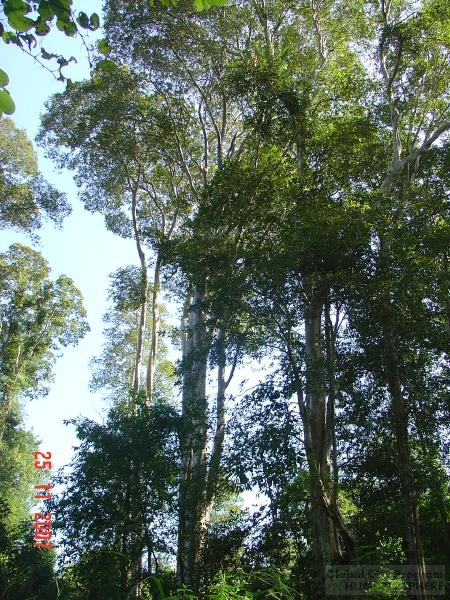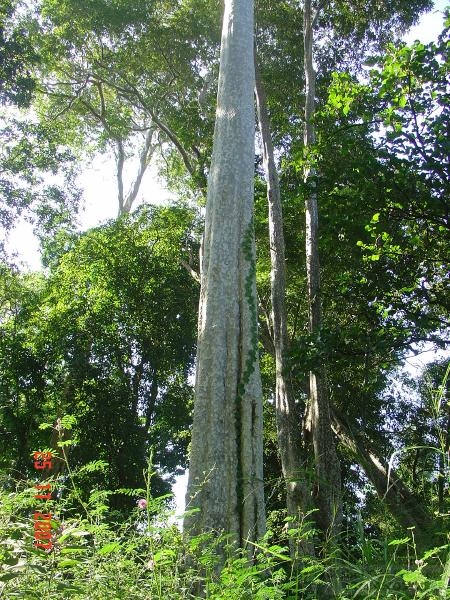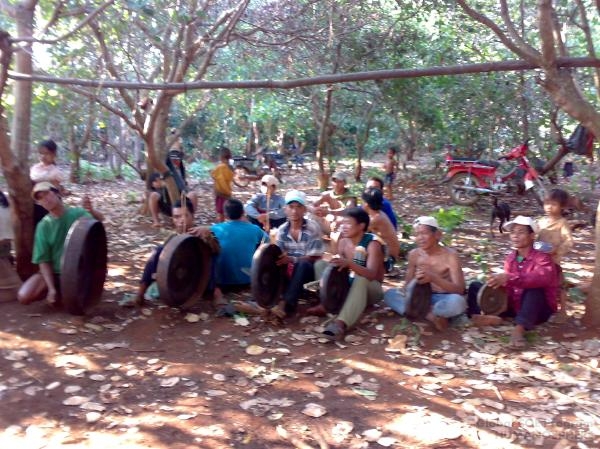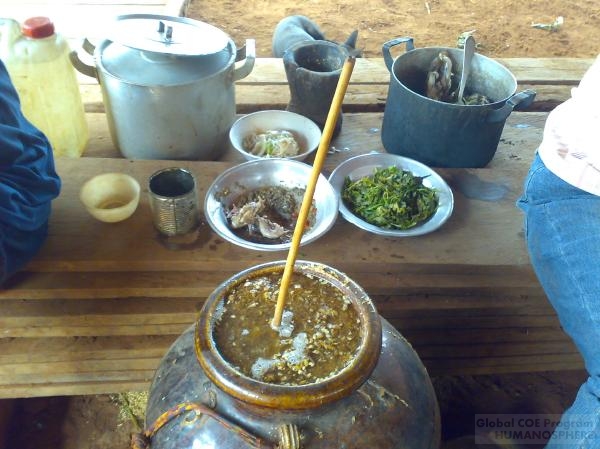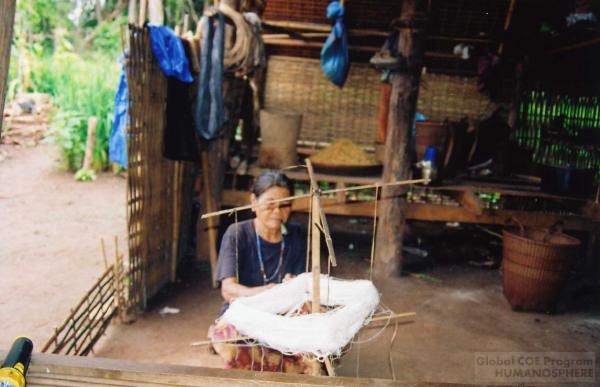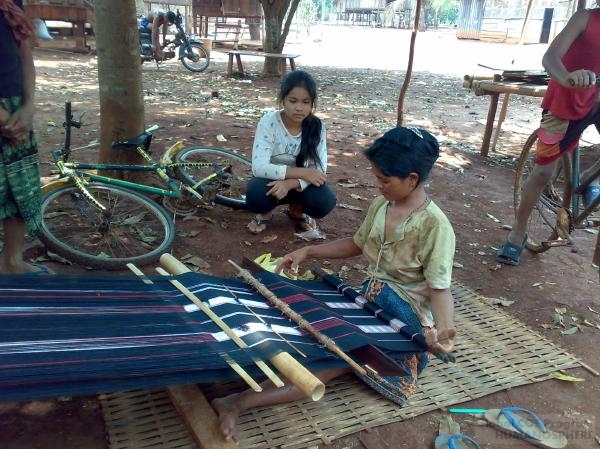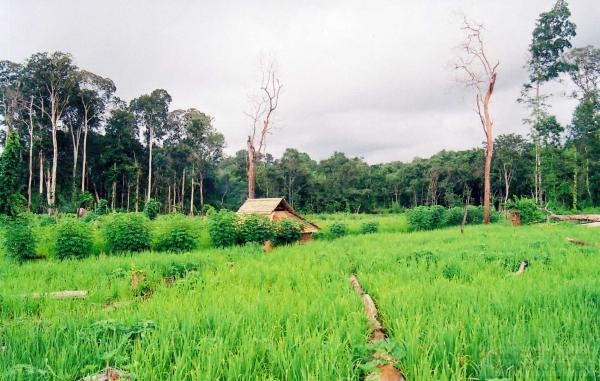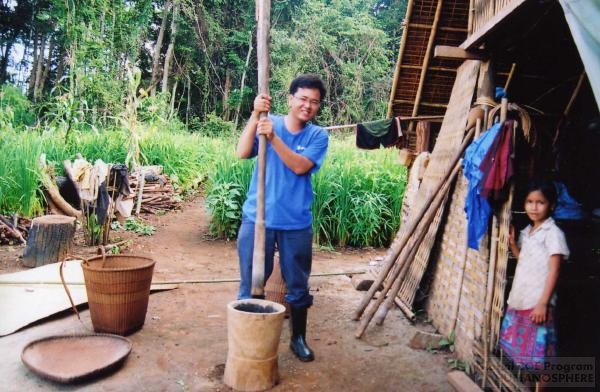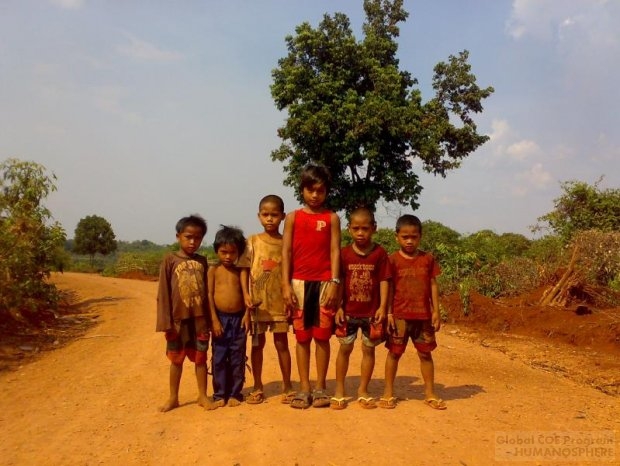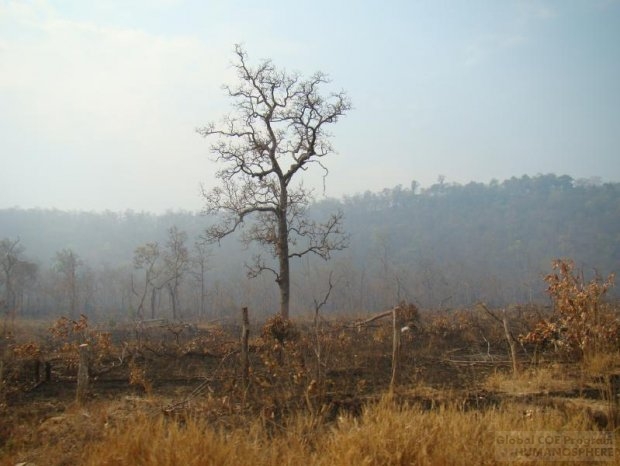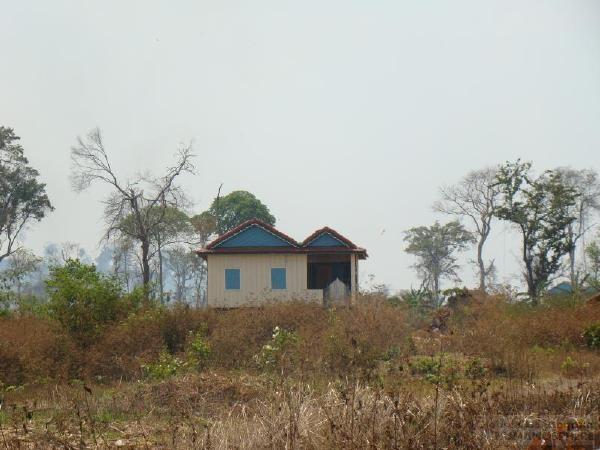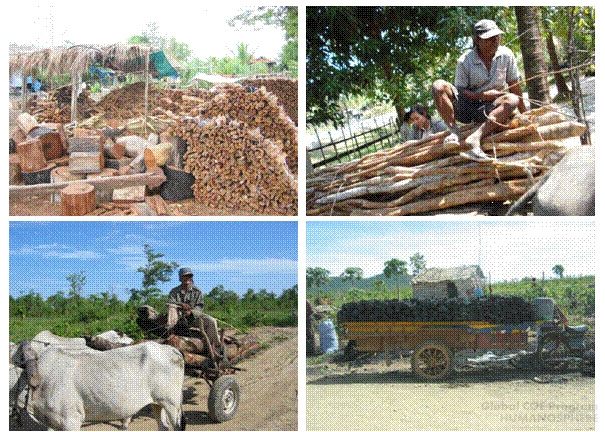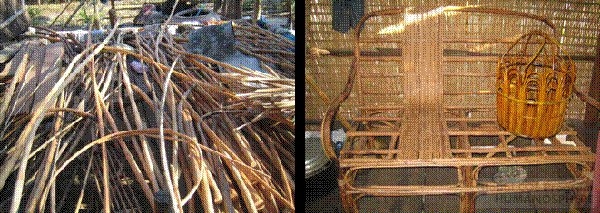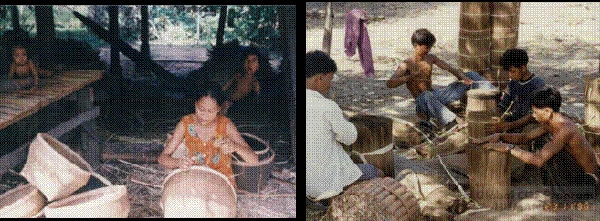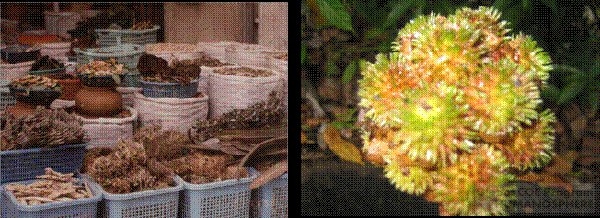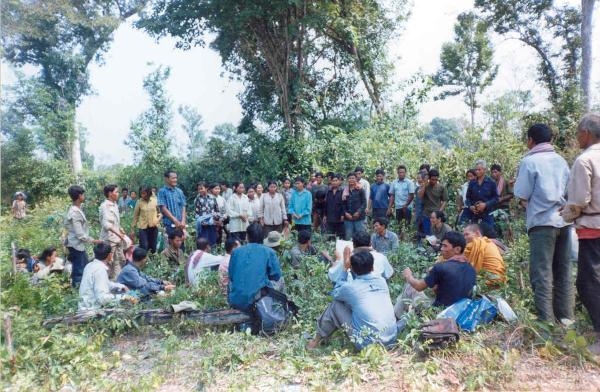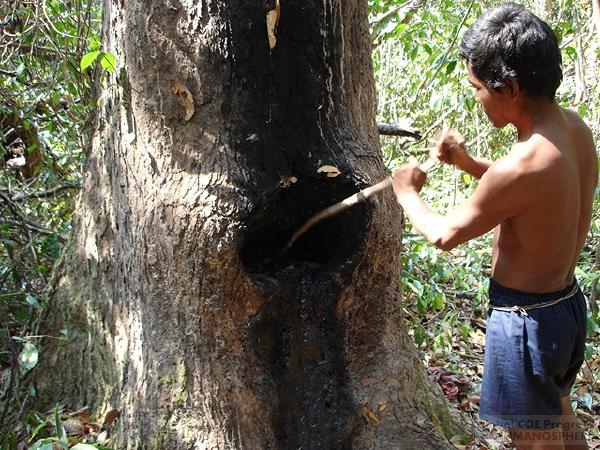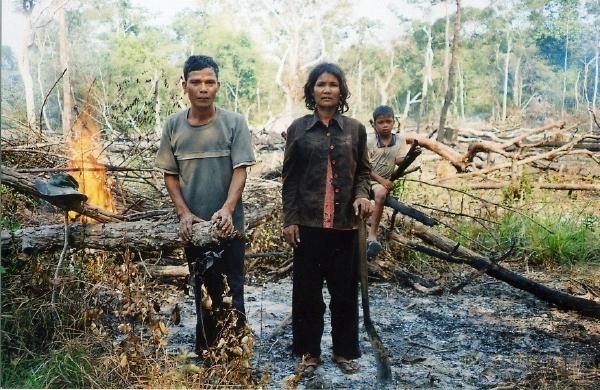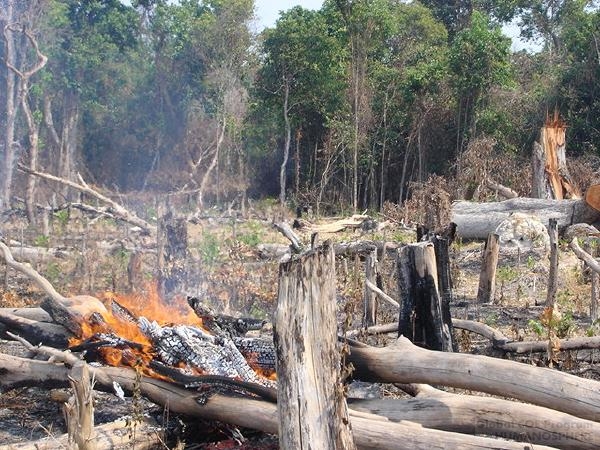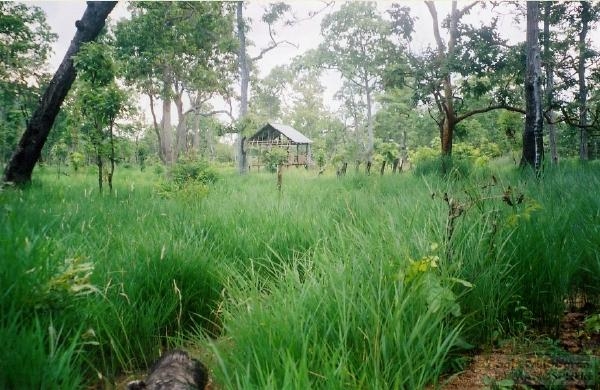Knowledge Conservation
| Knowledge Conservation Among Highland Groups in Cambodia |
| Defining Indigenous Knowledge |
| Reference |
Knowledge Conservation Among Highland Groups in Cambodia
Royal University of Phnom Penh
History Department
Thol Dina
E-mail: tholdina_history[a]yahoo.com
Knowledge conservation among the highland groups in Cambodia is an interesting subject in contemporary research context. The conservation of such a kind of knowledge will compile invaluable sources of information for the local people and the researchers. Through this work, we will have better understanding about the relationship between their knowledge and the milieu. This effort will contribute one part to the work of assimilating men and nature and sustainability of humanoshpere paradigm. To have better understanding of how important of Indigenous knowledge is, I will do a brief review of this knowledge definition and apply it into Cambodia context.
Defining Indigenous Knowledge
The study of indigenous knowledge becomes more interesting when previous studies indicate about its values on the efficient natural resources management (Johan. P 2003: 1). The indigenous knowledge, in the past, had been understood as backward or as the catalysts in destroying natural resources. This view point mostly comes from the government or the authority while anthropologists do not agree with this idea. Anthropologists believe that indigenous knowledge is scientific knowledge and work as a system in which it helps balance the stability of the ethnic highland groups. According to Anan (Anan G, 2000), he found that the destruction of natural resources in Thailand come from the activities of logging companies and high rank people in the government. In contrast, he found that indigenous people have helped preserve most of the natural resources in Northern Thailand. The area with indigenous people can conserve most forest compared to the other places.
This later assumption can be applied to the situation of Cambodia. Ethnic highlanders in northeastern area of Cambodia, before the permission of land and forest concession, could preserve most of their natural resources. Before 1990s, northeastern area of Cambodia had thick forest cover with lots of wild life. However, after 1993, when Cambodia has opened its free market which allow to have land and forest concession, the natural resources depletion becomes bigger and bigger. From the researcher investigation in the field work, the highland community that still practices the knowledge strongly can preserve most of their natural resources. From this perspective, indigenous knowledge is mostly practiced by highland people in rural area.
Indigenous knowledge is practiced among the indigenous people who live in the undeveloped areas (Howes and Chambers 1979). That is why from the perspective of developers who are mostly Westerners conceived this knowledge as un-progressed. However, from recent studies of the anthropologists, the indigenous knowledge really contributes in conserving and sustainable development of natural resources (Virginea D. Nazarea 1999). It means that indigenous people live or have close interaction with the environment so their lives and environment tie closely with each other. From the milieu, they know how to use it in a sustainable way. For example, the practice of land clearing that they have practiced for generation. They have good knowledge of doing it from choosing new plot, clear forest, burning technique, and keeping the old plot fallow for appropriate time.
This knowledge, according to Frederic Bourdier, led to the doubt that how the non-literate people know well how to use and manage their resources sustainability. The answer is that because of the close and interdependence between them and nature or we can call ethno-ecological knowledge (Ronald, C 1957). Ronald Conklin fond that indigenous people have close interaction with the nature surround them. This good relationship with the nature helps indigenous people to develop a well ecological knowledge because only them who know their surrounding environment better than other people.
From the broader perspective, indigenous knowledge can be seen as the knowledge belonging to a community. It is not private or individual which is owned by a particular person. It is a common property in a community whose members of a community are familiar with. This knowledge exists in the ritual ceremonies or any taboos which every body in the village knows and respect. Indigenous knowledge is seen as a process of passing from generation to generation through the oral teaching and daily practices.
From precise scrutiny, indigenous knowledge appears as multifarious, contestable product of an ever-evolving process (Sillitoe, P 1998). This concept indicates that indigenous knowledge has many functions and works as a process. The example from Thailand shows that customary role of indigenous people bans people from cutting forest especially the sacred forest (Annan Ganjanapan 2000). Due to Anan, indigenous people try to work by avoiding the violation to the nature. Furthermore, this knowledge plays an important role in solving the conflict among neighboring communities successfully. The village elder councils and traditional village chief solve the conflict among the highlanders following their customary rules (ibid).
Indigenous knowledge is not non-reflective but it is an evolved process (Scoones and Thomson 1994). It means that this knowledge will be developed when it is in an appropriated time. For instance, a case study of indigenous in northern Thailand shows that the villagers developed their customary rules into an organization to protest against outside intruders and this worked well to protect their forest. This can be clarify through another example from some ethnic highlanders in Ratanakiri province who have adapted their knowledge from time to time to survive. After 1993, with the increase of land grabbing, highlander people in Poy Commune, have situated their knowledge on their land use management by participating the process communal land title registration.
Because indigenous people have close interaction with forest, so their knowledge must have strong relation and developed with the nature. Thus, Yos Santasombat (Santasombat Y 2003) wrote that indigenous knowledge is a repertoire of situated experiences developed in particular physical and cultural contexts from intimate relationship between man and the nature. It means that without the natural resources, indigenous people will face difficulty because their lives strongly depend on the nature. In the other word, the destruction of nature or forest means the disaster to indigenous people. Because of having strong interaction with nature, indigenous people try to do and live avoiding violating nature or forest (Annan, 2000). Yos Santasombat also defined indigenous knowledge as the knowledge that is used by local people in order to make a living in a changing environment.
In the study of ethnography, indigenous knowledge needs to be understood in the broadest terms to encompass not only people’s understandings of social universes they settled, but also of their rights. It means that when we talk about indigenous knowledge, we refer largely to the need for a better understanding and accommodation of people’s knowledge of their right about land tenure arrangement and their approach to payment such as compensation (Sillitoe 2002). In other word, indigenous knowledge is not a limited knowledge that covers limited discussion which refers to only traditional culture, but it is sound science (Huns, 1993).
Studying indigenous knowledge becomes more important when it is recognized that this knowledge is not just the study of body of facts and things that are known. Studying about indigenous knowledge needs to include the issue of how rather than what (Gardner and Lewis 1996). According to Gardner (1997) the knowledge of indigenous people is generally of a sophisticated form. It means that the study of indigenous knowledge requires many variables and careful analysis in order to have deeper understanding which requires the researchers to focus on many aspects.
Indigenous knowledge, in the context of now a day study, is a scientific knowledge and could be understood as a system (Hunn 1982, Diamond 1966, Jones and Konners 1976, Nations and Nigh 1980, Johannes 1981). The indigenous knowledge is not isolated but it has interaction in a variety of ways with science and other agencies of development. This idea leads to the definition which raises that indigenous knowledge never stands still or static, but it is dynamic and strategic (Sikana 1994 and Sillitoe 1998). According to Sillitoe, indigenous knowledge has evolved from time to time to adapt with the new situation it faces. This is clear when we talk about the experience of the indigenous people in South America, especially the Kiaspo minority. These people have developed their idea from being exploited by outsiders to the better understanding of how to get benefit from their resources such as valued tree and diamond. Furthermore, they have good knowledge on how to protect their resources from outside intruders through setting organization in their community.
In Summary, Indigenous Knowledge is multifarious, reflective, scientific, practice by local community and dynamic. Ethnic highlanders have used their knowledge from time to time to sustain their livelihood. Their knowledge is maintained and used to protect and preserve their resources and property. Highland people have their own property regime which has evolved from time to time. Therefore, indigenous knowledge conservation should be a prioritized one.
In this context, there are a variety of topics that can be conducted in the field of knowledge conservation among indigenous people in Cambodia. It ranges from the traditional rituals, taboos, agricultural rituals, wedding ceremony and so forth.
Reference
Anan Gajanapun. (1998). The politics of conservation and the complexity of local control of forest in the Northern Thailand Highlands. Mountain Research and Development 18 (1): 71-82.
Anan Gajanapun. (2000). Local control of land and forest: Cultural Dimensions of Resources Management in Northern Thailand. Published in Chiang Mai, Thailand.
Conklin, H. R. (1954). The Relation of Hanunúo Culture to the Plant world. Ph. D Dissertation, Yale University.
Diamond, J. (1996). Zoological Classification System of a Primitive People. Science: 151:1102-4.
Gardner, K. (1996). Mixes Messages: Contested Development and the Plantation Rehabilitation Project. Oxfords: Berg, p.133-56.
Howes, M., et al. (1979). Indigenous Technical Knowledge: Analysis Implications and Issues. IDS Bulletin, 10 (2): 5-11.
Hunn, E. (1982). The Utilitarian Factor in Folk Biological Classification. American Anthropologist, 84: 830-47.
Johan, P. (2003). Negotiating Local Knowledge: An Introduction. Edited by Johan Pottier, Alan Bicker and Paul Sillito. London, Pluto Press.
Jones, N.B., et al. (1976). In Kalahari hunter-gatherers: Studies of the Kung San and their neighbors. Cambridge: Harvard University Press.
Nations, G.P., et al. (1980). The Evolutionary Potential of Lacandon Maya Sustained Yield Tropical Forest Agriculture. Journal of Anthropological Research 360: 1-30.
Sikana, P. (1994). Indigenous Soil Characterization in Northern Zambia. London: Intermediate Technology Publication.
Santasombat, Y. (2003). Biodiversity: Local Knowledge and Sustainable Development.
Sillitoe, P., et al. (2002). Participating in Development: Approaches to Indigenous Knowledge. Published by Routledge: USA.
Virginia, D. N. (1999). Ethnoecology: Situated knowledge/Located lives. The United State: The University of Arizona Press.
Development Discourse
| Development Discourse in Northeastern Area of Cambodia |
| Development Discourse |
| Reference |
Development Discourse in Northeastern Area of Cambodia
Royal University of Phnom Penh
History Department
Thol Dina
E-mail: tholdina_history[a]yahoo.com
Developing countries always seek to develop their countries through a variety of programs. Cambodia, one of the developing countries, has experienced a numbers of developing projects. In general perspective, development is good because it brings progression, prosperity, and the modernity to the target of the development programs. However, from the scrutiny perspective, development does not always mean good. Some development projects affected the livelihood, traditional practice, natural resources, and more conflicts. That is why there is discourse discussion on development. This section will discuss some concepts of development discourse in term of technology of power.
Development Discourse
From the development and state agencies, they always mention that development is good people because development will help people to understanding their potential and use it to improve their living standard. However, from the development project, powerless and poor people are always the target and the victims from the impacts of it (Kaufman, G 1997: 118). In Cambodia, most ethnic highlanders became the victims of the development works. With the grant of land and forest concession, highland people lost their land and forest because the granted company areas usually overlapped with their territories. In addition, some companies committed illegal logging which destroyed the forest rapidly and affected on the livelihood of highland people because most of them rely on the forest product gather besides their rice shifting cultivation.
Development has been introduced in northeastern area of Cambodia long time ago. At that time, the state power (French) viewed development program as civilization mission to pull people from poverty, poor health condition, and improve the condition. In fact, this kind of development programs brought little benefit to poor people. In contrast, it is seen as the way the state used it to strengthen their power and get benefits for them (Komatra, C 1998: 337). During French period, they built military post and rubber plantation around Memot and Snoul. French purpose at that time was to collect tax from people in the northeastern area. However, French could no collect much tax from the highlander people because they lived in the forest in which they can escape from French more easily. Even French caused burden to highland people, but they helped stop the slavery in the area.
The popular ideas of development related to the process of transforming poverty into prosperity and the integration of ethnic minorities into mainstream society (Quoted by Pen Dareth 1996). This policy is widely practiced by many states in Southeast Asia countries with their own highland people. In Cambodia, during Sangkum period, the government initiated new policy to integrate highland people into Khmer society. To make this policy work, the government at that time built school, health care centers, prepared journey for highland people to see low land area, and establish Phum Kumrou. With this initiation, the government hoped to help highland people to increase their livelihood and increase their rice products. The policy failed to help highland people because the government did not provide enough technical tools for highland people who never practiced the low land rice technique.
The education system worked very little because the lesson was not suitable for the students and the big barrier was that low land teachers did not understand well about the culture of highland people. Most importantly, the low land people still felt scared to live with the highland people who they used to have not good perception on them. For the other reason, the policy of the government at that time was to control highland people and strengthen their administrative in this area to protect the spread of communist movement (Meyer, C 1979 quoted by Ironside 1997).
After colonial period, development is seen as the model of progress in which it aims to promote people living standard. Development appears as the economy improvement which is mostly based on the concept of Westerners without paying much attention to local perceptions in the areas implemented. According to Shiva (Shiva, V 1989) this type of development tends to exploit local people resources and violate the landscape and affect their culture. Drawing from the examples from ethnic highland people in Ratanakiri, with the open of market economy after 1993, highlander people have faced challenges from the impacts of development. Their forest resources have been destroyed rapidly by the illegal logging. Further, with the increase of land price, their land is grabbed or cheated. These factors affect their culture and their livelihood because they lost forest sources and do not have enough land to cultivate upland rice.
Development is also implemented in order to bring modernization to people. It aims to pull people from poor living and experience the modern tools and technology. However, previous experiences indicate that modernization undermined the traditional society and traditional structures, identity, culture and livelihood of the people (Colm and Rigg 1997). With modern technology, some ethnic highlanders in Ratanakiri gradually abandon some of their traditional practices. Highlander people used to have traditional Kong when they celebrate their ceremonies. Nowadays, many villages do not use Kong to entertain in the ceremonies. They prefer to use modern musical tools in their ceremonies. Modernization also brings new culture to highland people. Traditionally, young highland people respected the elderly advices, but now they ignore the advices and do not pay attention to the teaching of elderly people.
The highland people are being marginalized and suffered from the impacts of development plans (Komatra, C 1998). They are excluded from making any important decision making for their future development. The government or development agencies do not listen to local people perceptions, but instead they design it for local people as if they have deep understanding of local people. Furthermore, development also reduces the social capital in the community. It means that when development exists, people care more about their own benefits and they will protect their interests through different activities which sometimes affect the people in the same community. Drawing on the examples from Ratanakiri province, some highland people have conflict with the same highland group because of the interest. Some highland people sold other village land to the business people or low land people by claiming that it is their ancestor land. This activity causes conflict among the same highland group and reduces the trust and social capital in their communities.
Development also focuses on the participation approach. Development and government agencies turn their approaches from model of progress, economic improvement, and modernization to participation. They stress on the participation of local community in the process of development in order to get more success. Again, according to Peter Hammer (Peter, H 2008), participation is not different from the previous approaches. It still serves the interests of development and state agencies. Participation is just a kind of new layer bases on the previous layers. It means that participation approach is designed to be new color, but in reality it is the same as the previous techniques. In participation approach local people are like the fish that swim in a pond of water and do not know clear about the water they are living in.
We can apply this kind of research not only in the northeastern areas of Cambodia, we the research can be done in the whole country. Development discourse can be studied in the forest areas, low land areas where there are many cases of land lost, Tonle Sap area, and especially in the city where there are cases of forced eviction.
Reference
Colm, S. (1996). The Highland Minorities and the Khmer Rouge in Northeast Cambodia 1968-1979. Documentation Center of Cambodia, Phnom Penh, Cambodia.
Colm, S. (1997). Land Rights: The Challenges for Ratanakiri’s Indigenous Communities. Watershed People’s Forum on Ecology Vol. 3. No. 1, July-October.
Colm, S. (1999). Land Rights: The Challenges for Ratanakiri’s Indigenous Communities. Watershed People’s Forum on Ecology Vol. 3. No. 1, 29-37.
Colm, S. (2000). Draft Regulations for Use, Land Management and Natural Resources. Ratanakiri, Cambodia.
Ironside, J. et al. (2003) Wilderness and Cultural Landscape: Settlement, Agriculture, and Land and Resource Tenure in and Adjacent to Virachey National Park Northeast Cambodia. Ministry of Environment Banlung, Ratanakiri, Cambodia.
Kaufman G. (1997). Watching the Developers: A Partial Ethnography. Oxforf and New York: Berge Publisher.
Komatra C. (1998). Living on the Edge: Marginality and Contestation in the Kui Communities of Northern Thailand. Ph.D Dissertation in Social Anthropology. Harvard University. UMI, A Bell & Howell Information Company.
Pen, Dareth. (1996). Cambodia and Its Ethnic Minorities Policy: Paper Presented at the International Conference on Asian Minority Culture in Transition Diversity, Identities, and Encounters, 12-15 December 1996, Munster: Germany.
Shiva, V. (1989). Stay alive: Women, ecology and development. London: Zed Books.
NTFPs on Community Livelihood
I: Introduction
Cambodia is located in Southeast Asia, between 10-15° longitudes and 102-108° latitudes. It occupies an area of 181,035 Km2 receiving tropical monsoon, dry and wet monsoons. So Cambodia has two distinct seasons, wet and dry. That is 6 months are wet and 6 months are dry. The climate is wet and hot with average temperature of 27.9° C. Cambodia has mountains, hills, plateaus, and tropical climate. As a result Cambodia rich natural resources especially forest. Forest is one of the important factors for economic development and supports survivals of human and wildlife. In addition it serves as a barrier to prevent storms, flooding, soil erosion, air purification and rain attraction.
Generally, the above villagers are heavily relying on agriculture including rainy rice and crop cultivation, and animal husbandry. Additionally, they are generating income through logging and selling labor to outside loggers. Presently, logging is no more continued. But, during the dry-time, villagers are working more on sugar palm, secondary crop cultivation and fruit trees such as coconut, banana, sugar apple, jack fruit, taro, lemon, mango, cashew and domestic animal husbandry and small-scale fishing activity. Moreover, some households are running a small grocery stores such as garlic, monosodium glutamate, cakes, rice wine, fish cheese and tobacco and cigarette. Furthermore NTFPs is the most importance income for household, they collected it from natural forest and community forestry; such ash ( firewood, lianas, mushroom, bamboo, bamboo shoot, vegetables, traditional medicine plants, poles, and wildlife).
II: Objective
- To analyze the capital of the local livelihood
- Economic aspects
- Resource (natural, area, species, amount,
- Human (education, indigenous knowledge,
- Social (
- Physical (infrastructure,
- To compare the NTFP income of different HHs in community
- To identify the main NTFP species for income generation
- To identify the indigenous knowledge on NTFP management
- To identify the potential for improvement of livelihood through NTFP management??
III: Methodology
- Collection of secondary infos. and data
- Field data collection/PRA/questionnaire/group discussion/observation/village meeting
- Data analysis/computing/statistic analysis/modeling
- Checking results (infos. and data) in the field/village meeting
- Report writing
IV: Interesting Question/Hypotheses
- NTFPs on farmland generate less income than that from common land
- What policy and regulations on NTFP management are available at national and local levels?
- The current policy and regulations on NTFP management is in accordance with the real condition of communities
- Local people have knowledge and can manage NTFPs in sustainable way
- Local people will participate in NTFP management only if they get incentive
Indigenous Natural Resource Management
KIM SOBEN, Royal University of Agriculture
Indigenous peoples of Cambodia have their own traditional concepts and principles of natural resource management systems, which are still being practiced today. Some communities have adapted the system with the changes that has been brought about by statutory laws and policies, as well as the growing change within indigenous societies. Indigenous communities still maintain clear territorial boundaries between community lands and community members do not allow strangers to use community land, although any individual may hunt on the territory of other villages. For example, people from highland villages in Ratanakiri do not allow rotational agricultural farms of other villages to be established within their territory. Indigenous peoples in Mondolkiri Province or other provinces however do allow other villagers to use their land for rotational agriculture and to collect products from their community forest but anyone using neighboring land in this manner would need to get prior permission from the traditional village leader. In most cases however, families have enough resources from their own land or around their own village. If inter-marriage occurs, and the couple has no land, they can approach the village elders or their relatives to request for their own plot. The couple are normally allowed to collect non-timber resources for their own use without getting the permission from the village elder.
Traditionally, the land is owned by the community but each family has access to resources and to their own plot of land. This arrangement is governed by a group of elders. Each community has clear boundaries associated with a stream, mountain, rock or big tree. Farm lands are divided and demarcated and encroachment on other peoples' farms is not allowed. Traditionally, people from different villages are not allowed to draw water from a given pool if one village has been granted rights over that pool. Communities also used to relocate their settlement and farming when they were confronted with diseases or disasters or when the population became too big.
Links(CambodiaFS)
-
Reyum, Institute of Arts and Culture
http://www.reyum.org/ -
Khmer Renaissance
http://www.khmerenaissance.info/index.htm
Members(CambodiaFS)
- Ang Choulean (Royal University of Fine Arts, Cambodia)
- Kim Soben (Royal University of Agriculture, Cambodia)
- Kobayashi Satoru (Center for Southeast Asian Studies, Kyoto University)
- Kono Yasuyuki (Center for Southeast Asian Studies, Kyoto University)
- Ogasawara Rie (Graduate School of Asian and African Area Studies)
- Ogo Takashi (Graduate School of Asian and African Area Studies)
- Thol Dina (Royal University of Phnom Penh, Cambodia)

